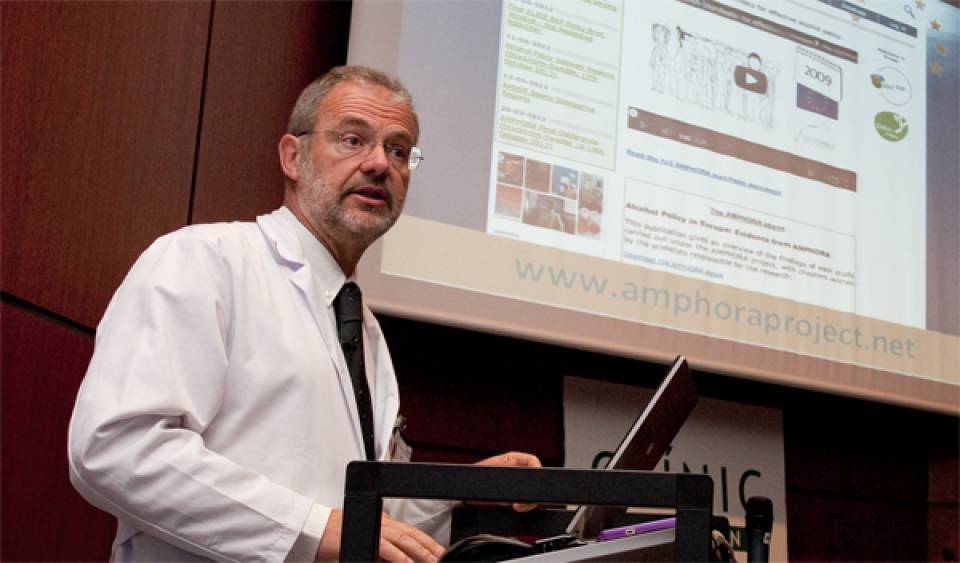Onaverage, Europeans over 15 years old drink 27g alcohol (around 3 alcoholic drinks) every day, more than twice the global average. One in eight Europeans consumes 60g or more of alcohol, several times a week.Around 138,000 people aged 15-64 years die prematurely from alcohol-related causes each year, with some 40% of these deaths due to liver cirrhosis, around 30% due to injuries (from accidents or violence), and 20% due to alcohol-related cancer.
These facts are among the findings made by the AMPHORA project researchers. The final manifesto of the project is a consensus document that suggests some clear and feasible strategies to reduce the burden of alcohol consumption on European health and economy. Some of the actions recommended by the AMPHORA experts are:
Banning advertising The AMPHORA project presents the results from the first longitudinal study on the effect that online marketing and sports sponsorship by alcohol producers has on young people’s drinking in the long-term. “The research clearly shows that the greater the exposure of 13-16 year-olds to online alcohol marketing and alcohol branded sports sponsorship, the greater the likelihood that young drinkers will consume alcohol nearly a year and a half later” explained DrAntoni Gual, director of the Addictions Unitat the Hospital Clínic de Barcelona, “the time has clearly come for a Europe-wide ban on all forms of commercial communications on alcohol, as has been done for tobacco.”
Warning labels Three drinks a day, the average amount drunk by Europeans, is the same as the toxic level that causes cancer. This level of consumption leads to about 136,000 new cancers a year in the European Union and puts Europeans at a lifetime risk for cancer more than twice that of daily exposure to second-hand smoke.
“The public deserves to be made aware of the dangers of alcohol” states Peter Anderson, Professor of Substance Use, Policy and Practice at Newcastle University, England, and co-lead of the AMPHORA project, “there are urgent things that governments need to do, like making information and health warning labels mandatory on all alcohol beverage containers, in the same way that cigarette packets carry labels saying that cigarettes cause cancer”.
Closing the treatment gap Effective treatment options, such as brief talking interventions and pharmacological treatments, are available for alcohol problems of different severities, and yet only a small percentage of those who need help receive it in European countries. The AMPHORA project has shown beyond a doubt that brief interventions for risky drinking in primary health care, as well as emergency care interventions,are effective in reducing risky alcohol consumption and even generate income for society. Pharmacological treatments are also effective in treating alcohol use disorders with good success rates at 3-6 months after treatment.
However, across the six European countries which participated in this study of the AMPHORA project (Germany, Italy, Spain, Switzerland, Austria and England), the proportion of people in need of treatment who actually received it ranged from less than 4% to around 23% (depending on the country). There are many reasons for this treatment gap, including a lack of awareness on the part of health providers and the stigma associated with alcohol problems, as with all mental health problems, meaning that people are ashamed to mention their problems and resources are diverted to more worthy causes. Professionals in the health sector are also sometimes reluctant to take on what is seen as a ‘social’ problem.
The AMPHORA Project AMPHORA is a four-year €4million project co-financed by the Seventh Framework Programme (FP7) of research of the European Commission and coordinated by the Hospital Clínic de Barcelona (HCPB) in Spain.AMPHORA contributes to science-based policy with new evidence on underexplored areas of alcohol consumption and alcohol-related harm in Europe. This knowledge is directed at those engaged in policy-making for development and implementation of more effective public health measures.

